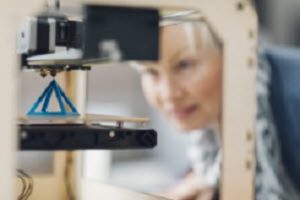The decreased cost and increased attention to three-dimensional, or 3D, printing has led to questions about the safety and potential health effects of these devices. New research published in the Journal of Occupational and Environmental Hygiene found that common filaments used in the printers can emit volatile organic compounds (VOCs) during the printing process. According to the U.S. Environmental Protection Agency, excessive exposure to VOCs can lead to eye, nose, and throat irritation; headaches; loss of coordination; and nausea.

vgajic / E+ / Getty Images
The study authors tested what’s known as the fused deposition modeling (or FDM) 3D printing process, the most common one in use. FDM devices work by heating filaments at various temperatures. The study found that four common filaments emit VOCs even at temperatures below the printing temperatures.
Researchers say one way to control VOC emissions from 3D printers is by using photocatalytic filters. They use ultraviolet light to limit exposures. Ventilation is a good practice when using 3D printers. While printing in a large, well-ventilated room is not a threat to users, using the printers in a room with poor ventilation could lead to a hazardous increase of VOCs in the air. The complete study is available at http://ow.ly/gl6j30c3ala.
Meanwhile, Carnegie Mellon University suggests the following practices for working safely with 3D printers.
- Always follow the manufacturer guidelines.
- Consult your safety department for a hazard risk assessment when considering modifications or novel uses for the 3D printing equipment.
- Notify coworkers before beginning non-routine and hazardous work.
- To prevent respiratory irritation, ventilate areas where model and support materials are used. Once a printing job has been started, do not open the cover, defeat, or override the interlock switch.
- If an interlock safety switch fails, do not use the printer.
- Wear nonpermeable gloves and a dust mask when accessing the stage area of the printer after printing.
- Wear protective gloves when handling uncured printing material.
- If material can splash, wear safety goggles.
- In the event of a leak or spill of printing material cartridges, use solvent-absorbent pads for model material and support material spills.
